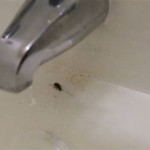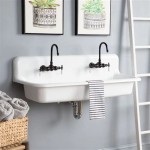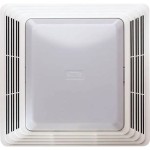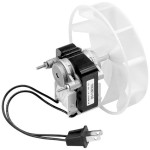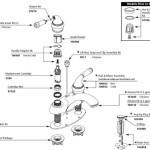How To Install A Bathroom Sink
Installing a bathroom sink is a relatively simple plumbing project that can be completed in a few hours. By following these step-by-step instructions, you can save yourself the cost of hiring a plumber and have a new sink installed in no time.
Tools and Materials You'll Need:
- New bathroom sink
- Faucet
- Drain assembly
- Pliers
- Wrench
- Putty knife
- Caulk gun
- Caulk
- Level
- Tape measure
- Pencil
Step 1: Prepare the Sink and Countertop
Start by removing the old sink from the countertop. If the old sink is sealed with caulk, use a putty knife to carefully cut away the caulk. Once the old sink is removed, clean the countertop surface thoroughly with a degreaser or cleaner.
Step 2: Install the Faucet
Next, install the faucet according to the manufacturer's instructions. In most cases, this will involve threading the faucet body through the holes in the sink and securing it with a washer and nut from below. Once the faucet is installed, tighten the nuts until they are snug but do not overtighten.
Step 3: Install the Drain Assembly
Now, install the drain assembly. The drain assembly typically consists of a tailpiece, a washer, and a nut. Start by placing the washer over the tailpiece and then threading the tailpiece into the drain hole in the sink. Secure the tailpiece with the nut, again tightening it until it is snug but not overtightened.
Step 4: Position the Sink
With the faucet and drain assembly installed, you can now position the sink on the countertop. Carefully align the sink with the holes in the countertop and then lower it into place. Use a level to ensure that the sink is level from side to side and front to back.
Step 5: Apply Caulk
Once the sink is in place, apply a bead of caulk around the base of the sink where it meets the countertop. Use your finger or a caulk tool to smooth out the caulk and create a watertight seal.
Step 6: Connect the Water Supply Lines
Now, connect the water supply lines to the faucet. In most cases, this will involve using a wrench to tighten the nuts on the water supply lines. Be sure to hand-tighten the nuts first and then use the wrench to tighten them further, being careful not to overtighten.
Step 7: Test the Sink
Once the water supply lines are connected, turn on the water and check for leaks. If there are any leaks, tighten the nuts on the water supply lines or the drain assembly until the leaks stop. Once you are satisfied that there are no leaks, you can use the sink as normal.
Tips:
- Be sure to measure the size of the countertop before you purchase a new sink. The sink should fit snugly within the countertop, with a small gap around the edges for caulk.
- If you are installing a new countertop, it is best to install the sink before you install the countertop. This will make it easier to align the sink and create a watertight seal.
- When applying caulk, be sure to use a caulk that is specifically designed for bathroom use. This type of caulk will be resistant to moisture and mildew.

How To Fit A Bathroom Sink Diy Guides Victorian Plumbing

How To Install A Bathroom Vanity

How To Install A Bathroom Vanity And Sink

How To Install A Bathroom Sink Step By Guide

How To Replace And Install A Bathroom Sink

How To Replace And Install A Bathroom Sink

How To Replace And Install A Bathroom Sink

Plumbing Repairs How To Repair Fix It Diy Install Bathroom Sink
How To Install Bathroom Sink Drain Queen Bee Of Honey Dos

Bathroom Sink Plumbing Installation Diy Montreal
See Also

